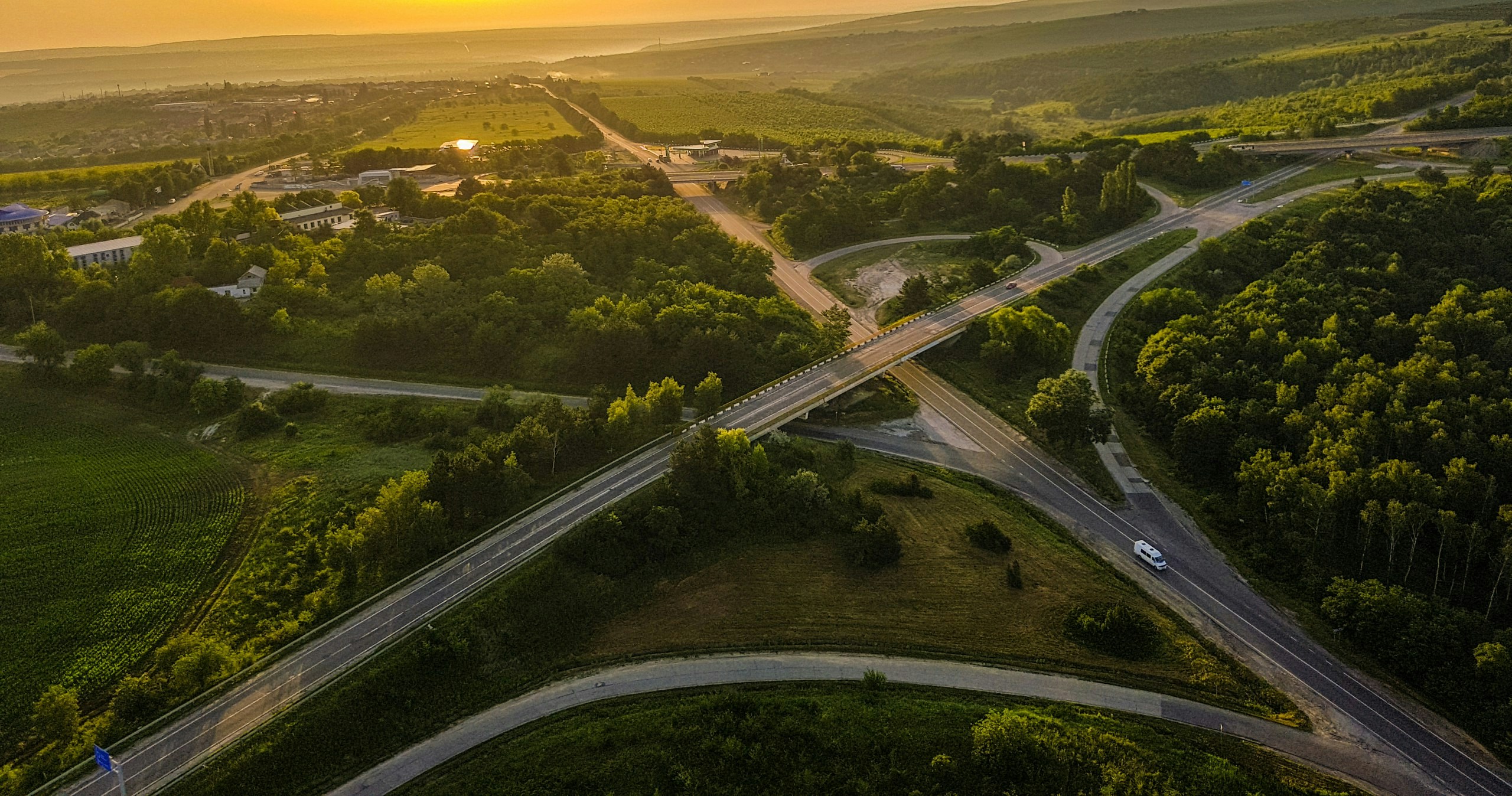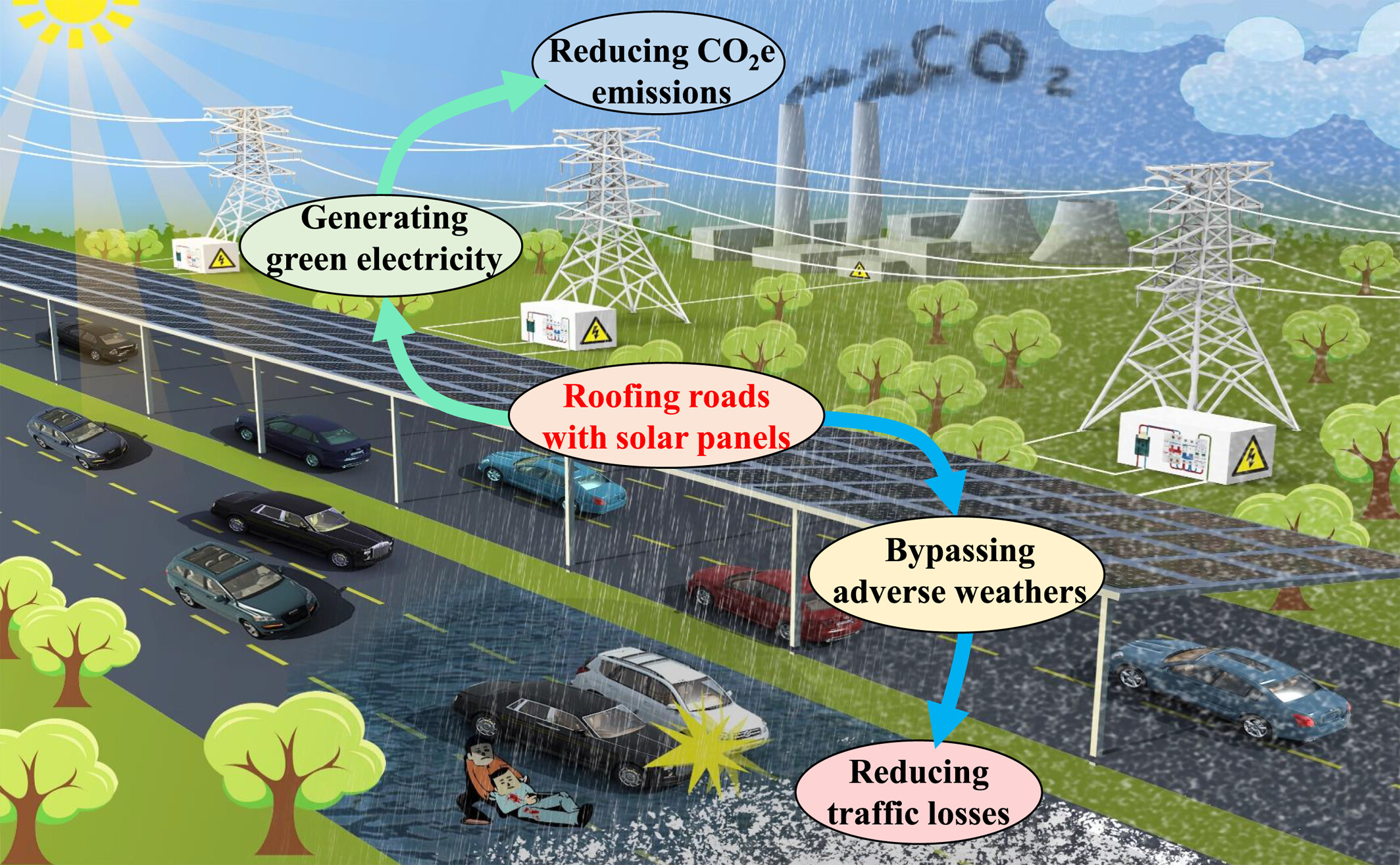
Covering Earth's highways with solar panels could generate more than 60% of the world's energy consumption each year, according to new research in Earth's Future. Credit: Unsplash/Alex Kalinin/Unsplash License
By the numbers:
- Earth has 3.2 million kilometers (1.9 million miles) of highways
- Worldwide solar highway roofs could generate more than 60% of global energy consumption each year
- The panels could produce enough electricity to replace 28% of the world's carbon emissions with clean energy
Covering the world's highways with solar panel roofs could dramatically reduce carbon dioxide emissions and road accidents, according to new research. The ambitious estimate, which calculated the costs and benefits of installing solar roofs over highways globally, could reduce the world's carbon emissions by approximately 28% by curtailing the need for fossil fuels.
The study envisions a network of solar panels elevated above highways and other major roads, generating electricity and shielding cars from inclement weather. The research was published in Earth's Future, an open-access AGU journal that publishes interdisciplinary research on the past, present and future of our planet and its inhabitants.
"There are some highway photovoltaic roof pilot programs, but not to the scale that we have imagined," said Ling Yao, a remote sensing scientist at the Chinese Academy of Sciences and the study's lead author. "Covering Earth's highways with solar roofs could generate 17.58 PWh of electricity per year, equivalent to more than 60% of the world's total electricity consumption in 2023."
Innovative solutions to reduce carbon emissions are necessary to meet the 1.5 degrees Celsius (2.7 degrees Fahrenheit) warming goal set by the International Panel on Climate Change, the authors suggest. Solar photovoltaics, or solar panels, made up 40% of new renewables installed between 2012 and 2021. As the cost of solar panels falls, creative solar projects like Yao's could help the global transition to sustainable energy.
PICTURING A RENEWABLE AND SAFE FUTURE
The inspiration for this imaginative study came to Yao as he drove across an overpass during his evening commute.
"I suddenly looked down at the road, and thought, 'The roads are connected to each other. It's just like a network - the cars can move freely from one place to another,'" he said. "I thought, 'Why don't we turn our roads into a network of photovoltaics?'"
Building solar roofs over highways would put already-developed land to use generating electricity, decreasing demand for greenhouse gas-producing energy and ultimately reducing carbon emissions. Earth is covered by more than 3.2 million kilometers (1.9 million miles) of highways - enough asphalt to wrap around the equator 251 times.
Solar-roofed parking lots have proliferated in recent years, but photovoltaic-paved and -roofed roads are still in their infancy. While some countries have started small pilot-scale highway photovoltaic projects, meant to show the promise of the technology, long stretches of highway covered in solar panels are still a long way off.

Benefits of highway solar roofs include reduced traffic accidents, clean energy generation and possible reductions in carbon emissions by replacing fossil fuel energy sources, the study says. From Figure 1 of the new study. Jiang et al (2024) Earth's Future e2023EF003975
The researchers examined highways and major arterial roads around the world, and calculated the cost to build and maintain a network of solar panels in each country or region. They based their analyses on polysilicon photovoltaic panels with 250 watts of maximum power generation, placed at a 10-degree tilt toward the outer lanes of the highway.
Installing solar roofs over the world's highways and major arterial roads would use 52.3 billion solar panels, Yao said. The highway-covering solar panels would generate up to 17,578 terawatt-hours per year across the globe, which is more than four times the annual energy output of the United States. Installing solar roofs over major arterial roads would generate an additional 13,570 terawatt-hours per year.
The cost per megawatt-hour and the potential for energy generation would vary geographically, and most of the installations would be built near densely populated areas with many highways, such as eastern China, western Europe and the U.S. East Coast.
By installing highway photovoltaic roofs across the globe, the world could produce enough energy to replace the equivalent of 9.66 gigatons of fossil fuel-generated carbon dioxide per year, or as much as two-thirds of the greenhouse gas emissions in the U.S. in 2022.
"This really surprised me. I didn't realize that highways alone could support the deployment of such large photovoltaic installations, generating more than half of the world's electricity demand, and greatly easing the pressure to reduce global carbon emissions," Yao said.
Solar highway roofs could also reduce worldwide traffic deaths by 10.8%, especially in regions with high precipitation, by shielding drivers and the road from rain and snow, the study estimated. Improved highway safety would additionally reduce the economic costs of traffic accidents.
AN ARRAY OF CHALLENGES
The futuristic highway setup could face setbacks, including pricey setups - potentially up to four times the cost of equivalent ground-based arrays - and maintenance costs. And beyond those challenges lie more mundane problems, like how to clean billions of solar panels.
Yao, however, is hopeful that these small pilot programs will catch on, and that some countries will implement highway solar roofs on a large scale. He envisions photovoltaic roofs being most easily installed on long, flat stretches of highway, like in the southwestern United States.
"Actually putting this into practice is the best evidence to make someone believe that this idea is practical," he said.






